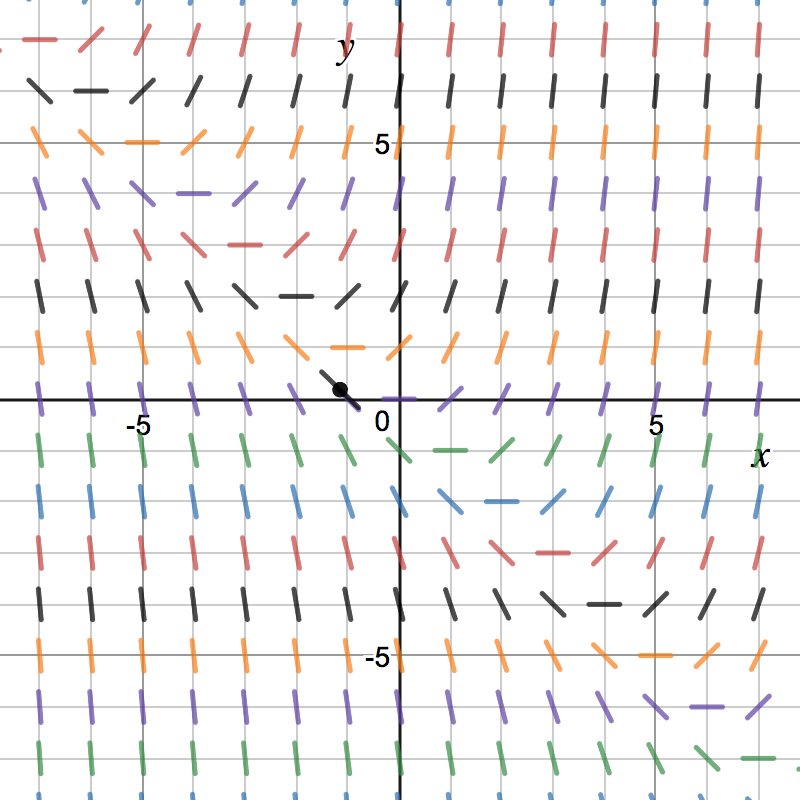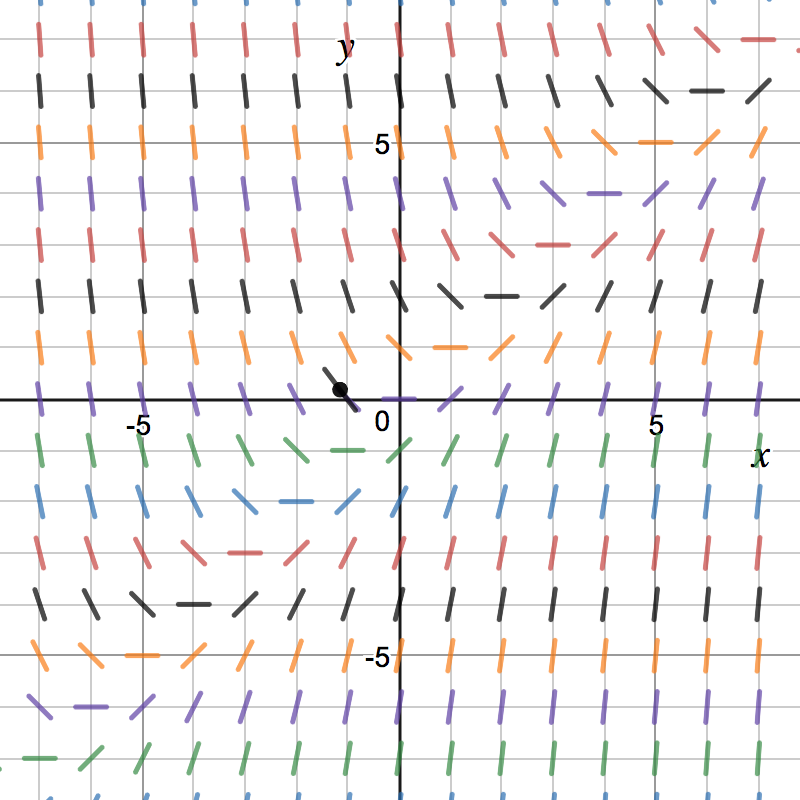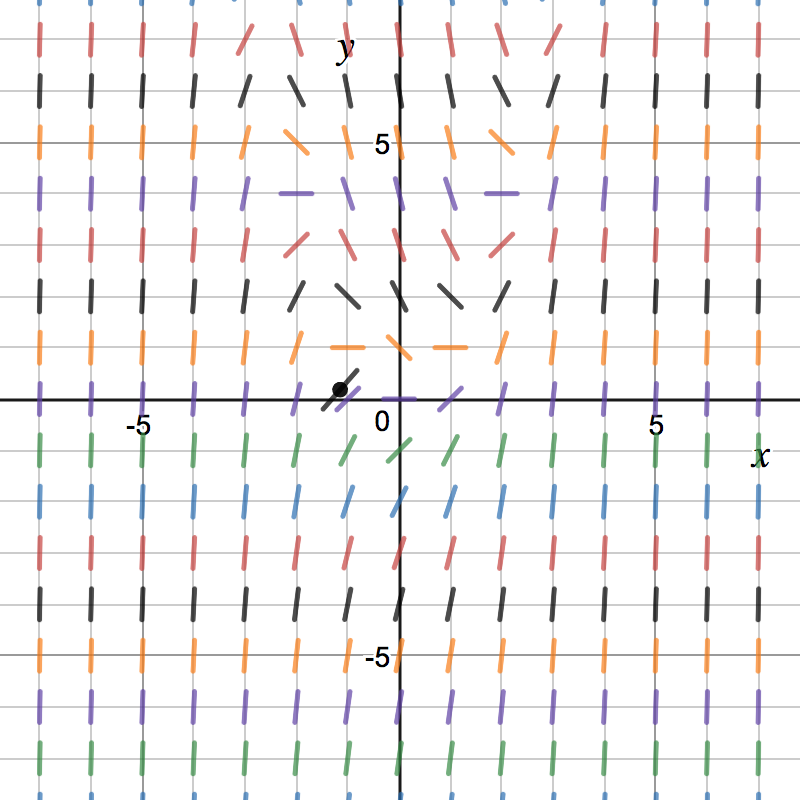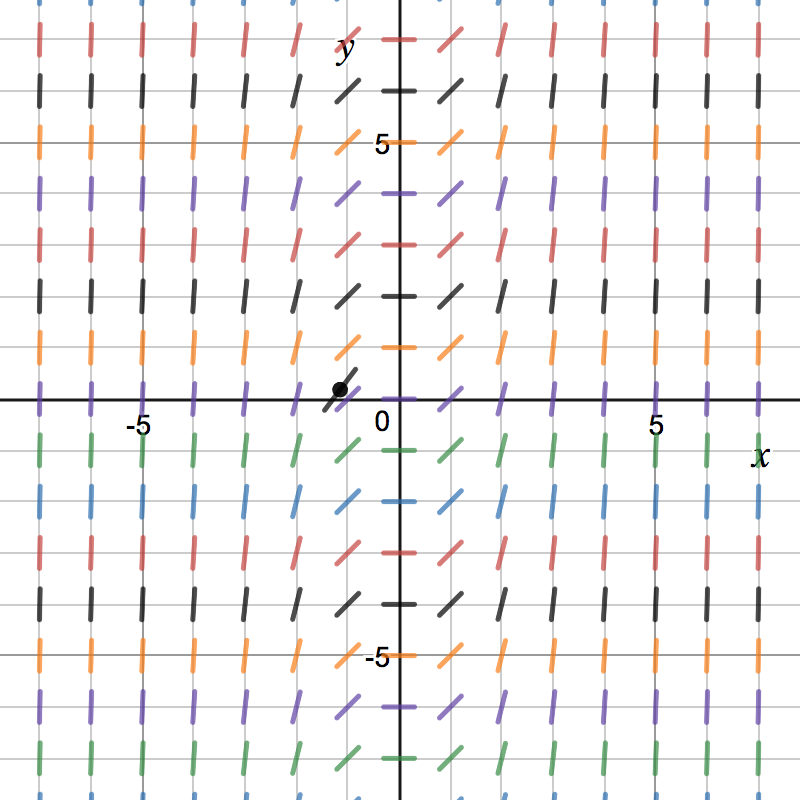Throughout this module, if something does not exist, write DNE in the
answer box.
Recap Video
Take a look at the following videos which recap the ideas from the section.
_
_
Example Video
Below is a video showing a worked example.
Problems
Direction Fields
Which of the following represents the direction field for ?
Which of the following represents the direction field for ?
Which of the following represents the direction field for ?
Which of the following represents the direction field for ?
Euler’s Method
Remember, Euler’s method is useful when trying to approximate a solution to
an initial-value problem. It proceeds in steps, using the differential
equation to get slopes of tangent lines, building the tangent lines, and
using the line to get the next approximate value of the function. The
procedure:
Procedure 1. Suppose and (so is a point on the curve). If the step
size is , then we will use the following formulas:
If and , use a step size of to approximate .
We are using steps of size to get
from to , so we will need two iterations of Euler’s method. We know is on
the solution curve from the given information. Our next step will be
approximating the -value at , i.e. the point . To get it, notice that the slope at
is:
So the tangent line at has slope . In theory, this would mean that
our tangent line is (since the slope is and it goes through ), and
so the -value at is approximately . Notice that this agrees with the
formula:
which is why the formula works. Therefore, the first step of Euler’s method
gives an approximation of .
For the second iteration, we will use this new point as our starting point.
Notice
Therefore, at , we expect a -value of
Therefore, .
Repeat the previous problem with a step size of instead of to approximate .
You may use a calculator to help you get the values. Fill out the following
table, rounding all answers to four decimal places:
Notice we get a slightly better approximation. As we decrease the step size
further, we will get better approximations.
A car travels in a straight line. At time , the car’s position () is . Its velocity
is given by . Using Euler’s method with a step size of , we can approximate
the car’s position at is:



